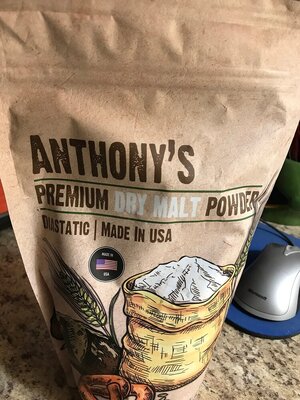- Jan 16, 2019
- 388
- 452
Thanks Everyone for your helpful suggestions. I do need to write them down.
I did order this off Amazon and from what I read this, along with the aging, water and salt will likely give me the flavor I have been looking for.

Once I stop being lazy, I will get around to making another batch of griddle muffins and let ya all know how they turned out.
I have only tried to make a sourdough starter once and it was a mess. May have to try again someday.....
Mark
I did order this off Amazon and from what I read this, along with the aging, water and salt will likely give me the flavor I have been looking for.

Once I stop being lazy, I will get around to making another batch of griddle muffins and let ya all know how they turned out.
I have only tried to make a sourdough starter once and it was a mess. May have to try again someday.....
Mark





